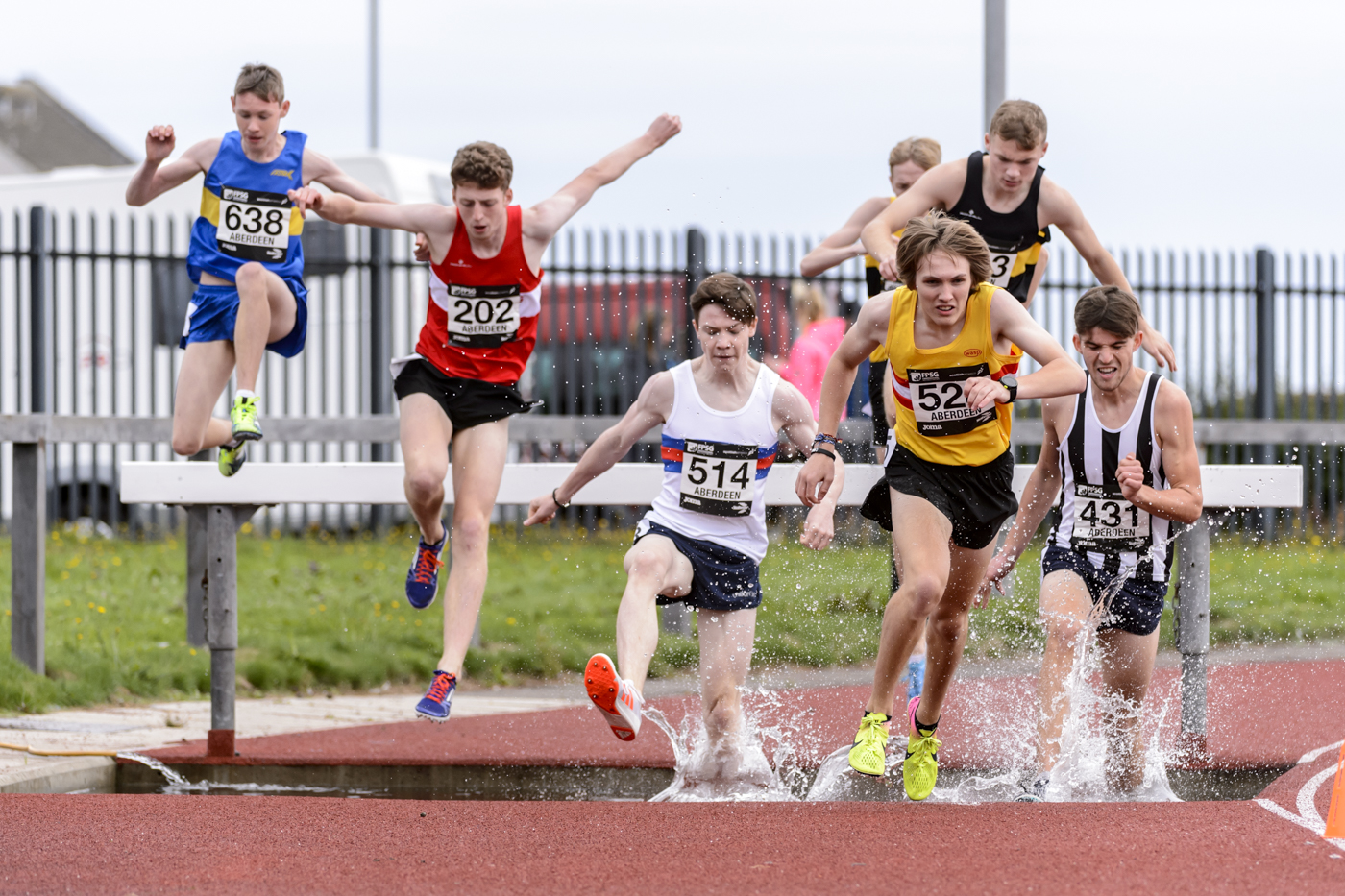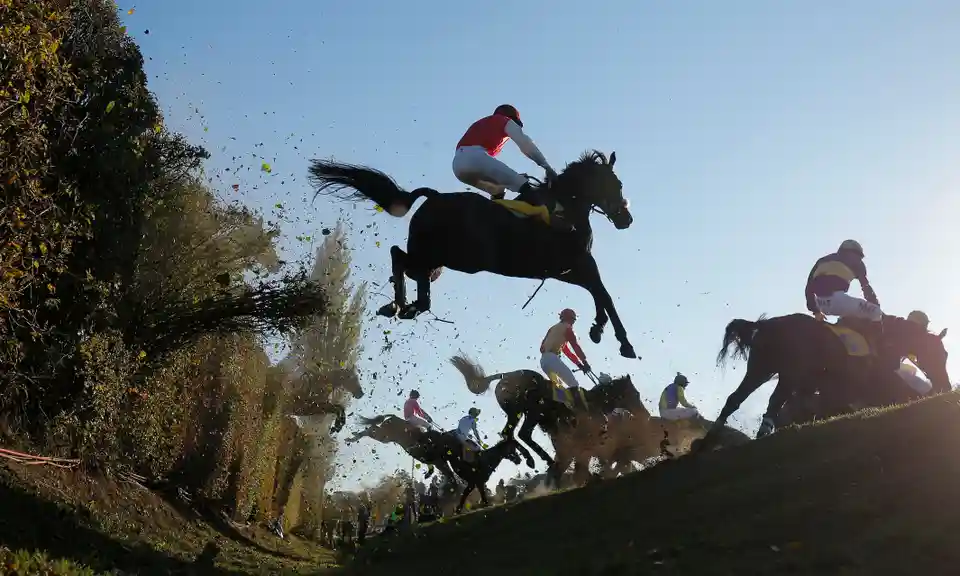Steeplechase History and Evolution

The steeplechase, a thrilling and challenging equestrian event, has a rich history spanning centuries. Its origins can be traced back to 18th-century Ireland, where it was a form of informal competition that tested the agility and endurance of both horse and rider.
Early Forms and Origins
The earliest forms of steeplechase racing were not standardized, and the courses were often determined by the natural terrain. Riders would navigate through fields, over fences, and across streams, with the first to reach a designated landmark declared the winner. These early races were often held for entertainment and to settle disputes, and they were often informal and unregulated.
Evolution of the Steeplechase
Over time, steeplechase racing evolved into a more organized and formalized sport. The development of formal courses, standardized rules, and specialized equipment helped to enhance the safety and fairness of the competition. The first official steeplechase race was held in 1830 at the Curragh Racecourse in Ireland, and the sport quickly gained popularity in other countries, including England, France, and the United States.
Key Changes in Steeplechase Racing
Course Design
Steeplechase courses have evolved significantly over time. Early courses were often rough and unpredictable, but modern courses are designed with safety and spectator enjoyment in mind. They typically feature a variety of obstacles, including fences, water jumps, and ditches. The design of these obstacles has also changed over time, with a focus on safety and rider comfort.
Rules and Regulations
The rules and regulations governing steeplechase racing have also evolved to ensure fair competition and rider safety. Early races were often characterized by a lack of rules and a focus on individual skill and daring. However, as the sport became more organized, a set of rules and regulations was established to ensure fair competition and minimize risk.
Equipment
The equipment used in steeplechase racing has also evolved significantly. Early riders used horses that were bred for general purpose, but modern steeplechase horses are specifically bred for their athleticism and stamina. The saddles, bridles, and other equipment used in steeplechase racing have also been refined to enhance performance and safety.
Timeline of Significant Events and Figures
- 18th Century: Steeplechase racing emerges as an informal competition in Ireland, often held for entertainment and to settle disputes.
- 1830: The first official steeplechase race is held at the Curragh Racecourse in Ireland.
- 1839: The Grand National Steeplechase is established in England, becoming one of the most prestigious and challenging steeplechase races in the world.
- 1900: Steeplechase racing is included in the Summer Olympics for the first time, with the event being held in Paris, France.
- 1960: The National Hunt Chase is established at the Cheltenham Festival, becoming another prestigious steeplechase event.
- 1970s-1980s: The development of new materials and technologies leads to advancements in steeplechase equipment, such as saddles, bridles, and horseshoes.
- Present Day: Steeplechase racing continues to be a popular and exciting sport, with events held around the world.
The Steeplechase Course and Obstacles: Steeplechase Race

The steeplechase course is a unique and challenging terrain that sets this race apart from other running events. It’s not just about speed; it’s about agility, strategy, and the ability to overcome obstacles that stand between the runners and the finish line.
Course Layout
A steeplechase course typically consists of a standard track oval, combined with a cross-country section that includes several water jumps and other obstacles. The total distance for a steeplechase race is 3000 meters (approximately 1.86 miles) for men and 2000 meters (approximately 1.24 miles) for women.
The course layout is designed to be challenging, incorporating both speed and endurance. The track portion allows for bursts of speed, while the cross-country section requires runners to navigate varied terrain and obstacles, testing their agility and stamina.
Obstacles in Steeplechase
Steeplechase obstacles are the defining feature of the race. They are designed to test a runner’s ability to maintain momentum while negotiating challenging terrain. Here are the different types of obstacles encountered in a steeplechase race:
Water Jumps
Water jumps are the most iconic obstacles in steeplechase. They are typically 3.66 meters (12 feet) long and 0.91 meters (3 feet) wide, with a water depth of 0.76 meters (2.5 feet). Runners must clear the water jump without losing momentum, often leaping over the water and landing on the other side.
Hurdles
Hurdles are another type of obstacle found in steeplechase. They are similar to hurdles used in other track and field events, but they are usually higher and more challenging. Steeplechase hurdles are typically 91.4 centimeters (3 feet) high, with a spacing of 35 meters (115 feet).
Other Obstacles
In addition to water jumps and hurdles, some steeplechase courses may include other obstacles, such as fences or ditches. These obstacles are typically designed to be challenging but not overly dangerous.
Obstacle Characteristics
Here is a table summarizing the characteristics of each obstacle:
| Obstacle | Height | Width | Material |
|—|—|—|—|
| Water Jump | 0.91 meters (3 feet) | 3.66 meters (12 feet) | Water |
| Hurdle | 91.4 centimeters (3 feet) | Varies | Wood |
| Other Obstacles | Varies | Varies | Varies |
Steeplechase Techniques and Strategies

The steeplechase is a unique and challenging event that requires a combination of speed, endurance, and technical skill. Runners must navigate a series of obstacles while maintaining a fast pace, making it a thrilling and unpredictable race.
The Importance of Rhythm and Timing
The rhythm and timing of a steeplechase runner are crucial for success. The obstacles, especially the water jump, require precise timing and coordination to clear them efficiently. Runners need to find a rhythm that allows them to maintain their speed while approaching the obstacles and then adjust their stride length and pace to clear the obstacles without losing momentum.
- Consistent Pace: Runners need to establish a consistent pace that allows them to conserve energy for the final stretch of the race.
- Efficient Obstacle Clearance: Maintaining a consistent rhythm helps runners anticipate the obstacles and clear them with minimal disruption to their pace.
Jumping Technique
The jumping technique used in steeplechase is essential for clearing the obstacles efficiently and safely.
- Foot Placement: Runners aim to land with their feet close together, minimizing the risk of tripping or losing balance.
- Arm Action: Arm action plays a significant role in maintaining balance and momentum during the jump.
- Body Position: Runners maintain a slightly forward lean during the jump, ensuring a smooth transition over the obstacle.
Steeplechase Strategies for Different Runners, Steeplechase race
- Sprinters: Sprinters typically focus on maintaining a fast pace throughout the race, relying on their speed to overcome the obstacles. They may take a more aggressive approach to the water jump, aiming to clear it quickly.
- Distance Runners: Distance runners often prioritize pacing and endurance. They may choose a more conservative approach to the obstacles, focusing on maintaining a steady pace and conserving energy for the later stages of the race.
Steeplechase race – The steeplechase is a unique event, demanding both speed and endurance, just like the way carmelo anthony dominated the basketball court. The obstacles, like the water jump, test a runner’s courage and athleticism, much like the way Carmelo faced down defenders and defied expectations throughout his career.
The steeplechase is a race against time, and just like Carmelo, those who excel in it leave their mark on the sport.
The steeplechase, with its hurdles and water jumps, demands a unique blend of speed, agility, and endurance. One athlete who embodies this perfectly is el bakkali , a Moroccan star who has consistently pushed the limits of the event.
His powerful stride and flawless technique have made him a force to be reckoned with, captivating audiences with his electrifying performances in the steeplechase.